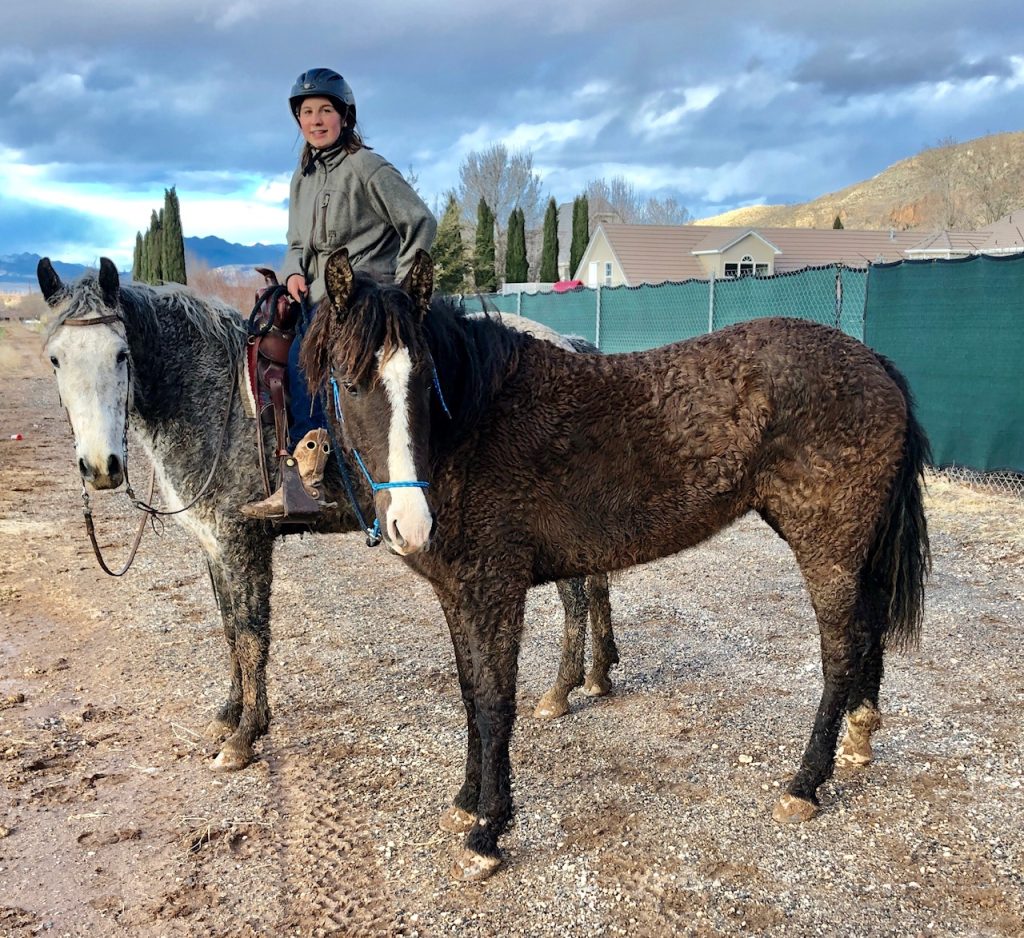There are two different types of curly coated Fox Trotters in the world that consistently have full curly bodies, manes, etc. and keep these curls for their entire life from birth to death. These are what most breeders describe as Dominant or Recessive Curly Fox Trotters.
Recessive Curly Fox Trotters – Ever heard of an unusual looking curly foal that surprises a breeder when two straight haired Fox Trotters are bred together? Many breeders have unfortunately named this odd genetic occurrence the recessive curly gene. It is in no way genetically related to the dominant curly gene that we breed for. This gene lays hidden in the DNA of the best lines of Fox Trotters. Our research shows that Old Fox and his son, Blankenship Diamond as well as his grandson, Golden Governor, are carriers of this gene. All the pedigrees of recessive curlies we have found so far trace back back to Old Fox on both sides of their pedigree. We avoid any bloodlines who are known or suspected carriers of the recessive gene.
It takes two recessive genes to make this kind of curls present in foals. If two straight haired Fox Trotters that carry this gene are bred together, 25% of the time they will produce one of these foals that have curls on their bodies, sparse manes and tails, potential serious health problems etc. For some reason, these “recessive curly” foals usually shed some or all of their manes and tails in the summer and may have health problems such as the mouth ulcers in the mare shown on the left here. They may also be smaller than regular Fox Trotters and have other negative health issues such as thin hoof walls, slobbering and body hair that falls off easily. Most people consider this type of horse to be a genetic mishap and used to cull foals when born. If you can handle the health problems that many have, we have heard that this type of horse is a very sweet companion. This “recessive curly gene” is not the same gene that produces curls on our horses. They are totally different. This is NOT the kind of Curly Fox Trotter that we produce and raise. We don’t know anyone who does raise them purposely.
Dominant Curly Fox Trotters – The other type of curly coated Fox Trotter is the kind we raise here at Zion Gait Curlies. It comes from a dominant curly gene. This good dominant curly gene has been producing beautiful and healthy curly horses for hundreds of years and originate in the wild mustang herds in the Western United States. These curly horses are produced when at least one curly coated parent contributes a dominant curly gene to its foal. You must see curls on the body, mane, tail, ears, fetlocks etc. on at least one of the parents to produce this type of foal. All dominant curly foals have tons of beautiful curls that look like a lamb as shown in the photos of Curly Horses on the left. Dominant Curly Fox Trotters are vigorous and beautiful horses with long manes and tails year round and heights range from 14 to 16 hands. They are healthy just like regular Fox Trotters, but with that beautiful, flashy hypoallergenic curly coat. These rare horses come from an unbroken line of Curly Fox Trotters who were bred to some of the best Fox Trotter’s such as Walker’s Merry Lad, Rex’s Golden Touch, Danney Joe W. and Mr. President. We are currently breeding our curly mares with the best bloodlines, conformation, gait and temperament in the Fox Trotter
world to produce the best Dominant Curly Fox Trotters in existence!(Occasionally, some Fox Trotters will have a wavy mane, tail or some wavy body hair. This may be some other type of curl or wavy gene at work. These horses are quite different from the ones produced at Zion’s Gait Curlies. Though some may call them curly horses, we do not as they look totally different from the horses we produce.)
